NB West Wins Quality Award for I-44
BY Sandy Lender
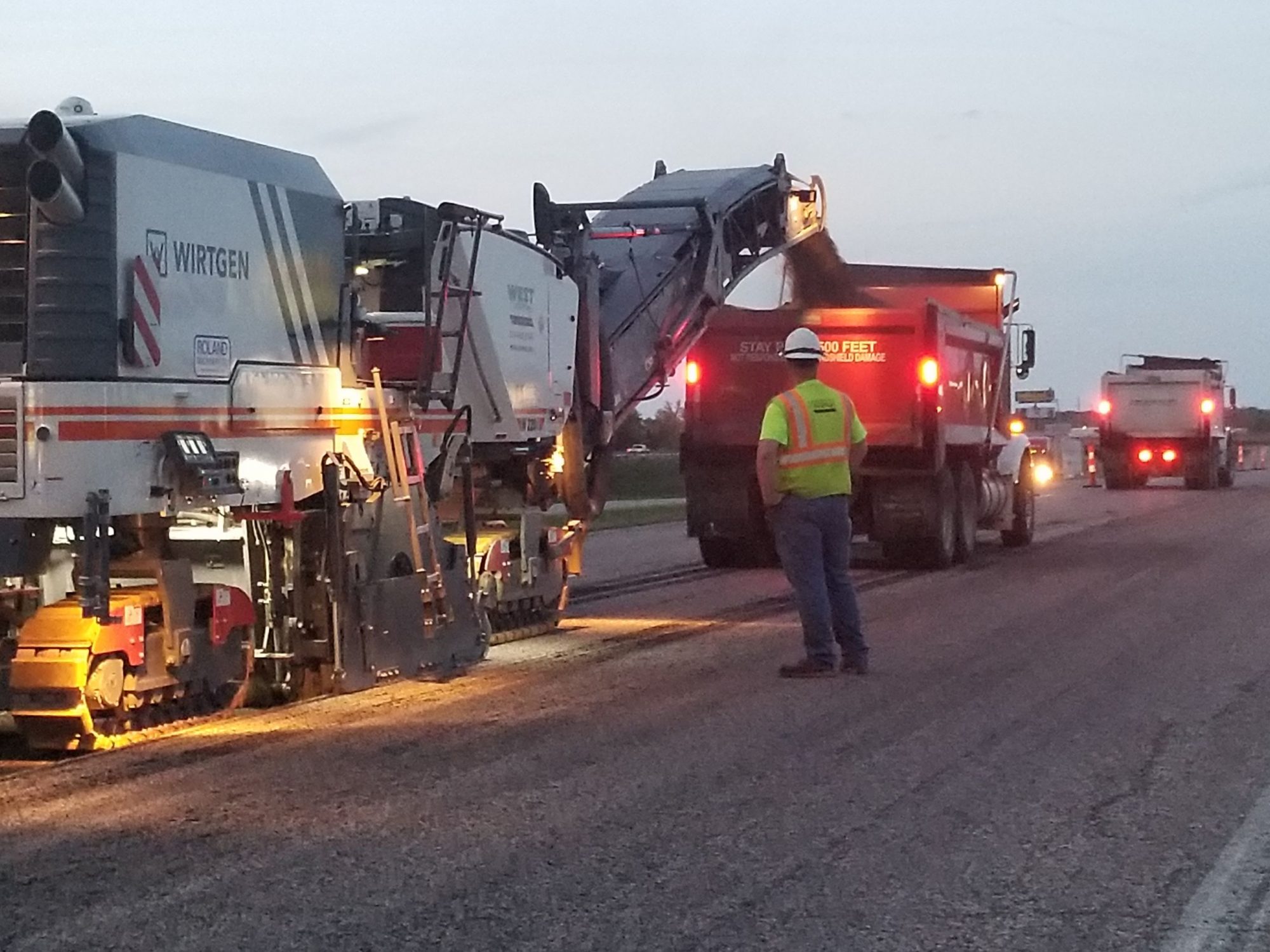
The production and paving crews for N.B. West Contracting Co., Sullivan, Missouri, have put in the time and effort to create award-winning pavements before. Their recent Quality in Construction (QIC) award from the National Asphalt Pavement Association (NAPA) for Interstate 44 has a touch more gravitas because it represented a job well done on their home turf. The project was a mill and fill that consisted of a 2.25-inch lift of Superpave 190B and a 1.75-inch lift of 125BSM. The SP190B included 40-45 percent recycled asphalt pavement (RAP).
“It was a great feeling to win a bid right in front of our Sullivan office,” Vice President Chris West said. “As it was a 135,000-ton job, there were eyes from all over the state on the bid. Our estimating and project management team led by Justin Zimpfer and plant/QC personnel led by Steve Jackson and Joe Schroer sharpened their pencils and put together great mixes. We were read low bidder by 0.19 percent on a $17,950,000 bid. It was a great bid and close to home for many of our employees, with nearly a year and half worth of work for multiple crews.”
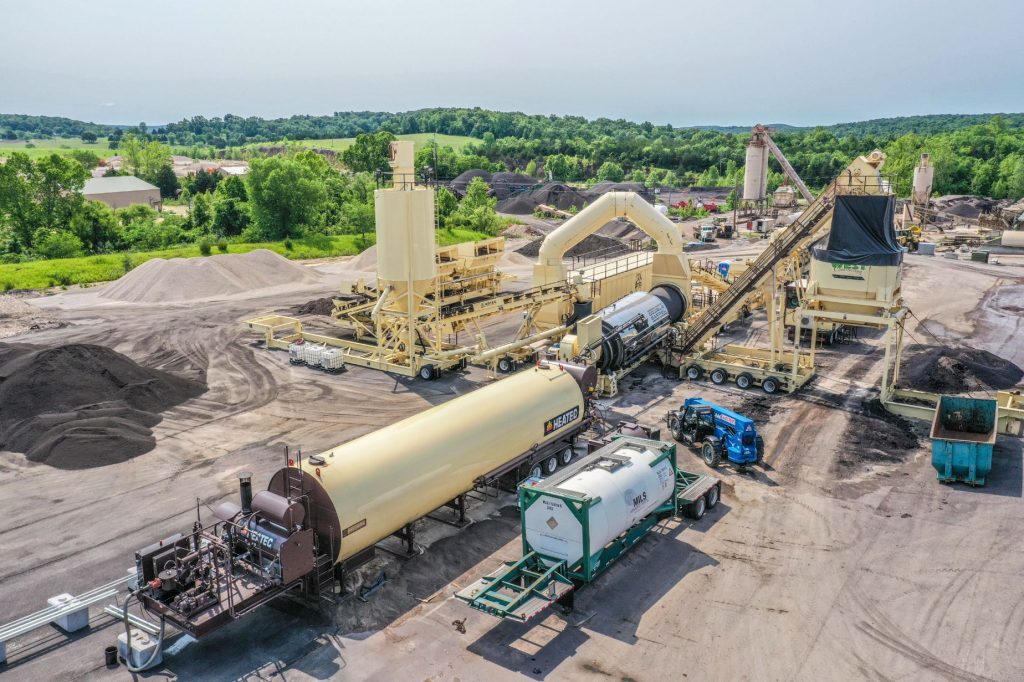
For the I-44 project, N.B. West produced the SP125BSM with Evotherm in its new Astec portable plant.
The job also had an intelligent construction element that Missouri Department of Transportation (MoDOT) Field Materials Engineer Daniel J. Oesch, P.E., described for readers:
“The use of intelligent compaction (IC) and paver mounted thermal profile scanning (PMTPS) together provide the ability to promote and ensure not only consistent placement temperatures but also that adequate pass coverage is achieved before the mat cools. The use of these technologies together provide a greater level of confidence to the owner that the entire paved surface is adequately consolidated since it is all mapped. The trial section is used to establish the optimum pass count and random cores on the project then validate that density is being achieved, at least for today. For the contractor, these tools allow for issues to be identified in real-time and corrections to be made at the moment they occur. This should help with the contractor’s quality control and minimize the risk of non-compliant material. Incorporating incentives and disincentives into the contracts for these items promotes best practices, greater attention to quality, and can translate into less maintenance long-term for the owner.”
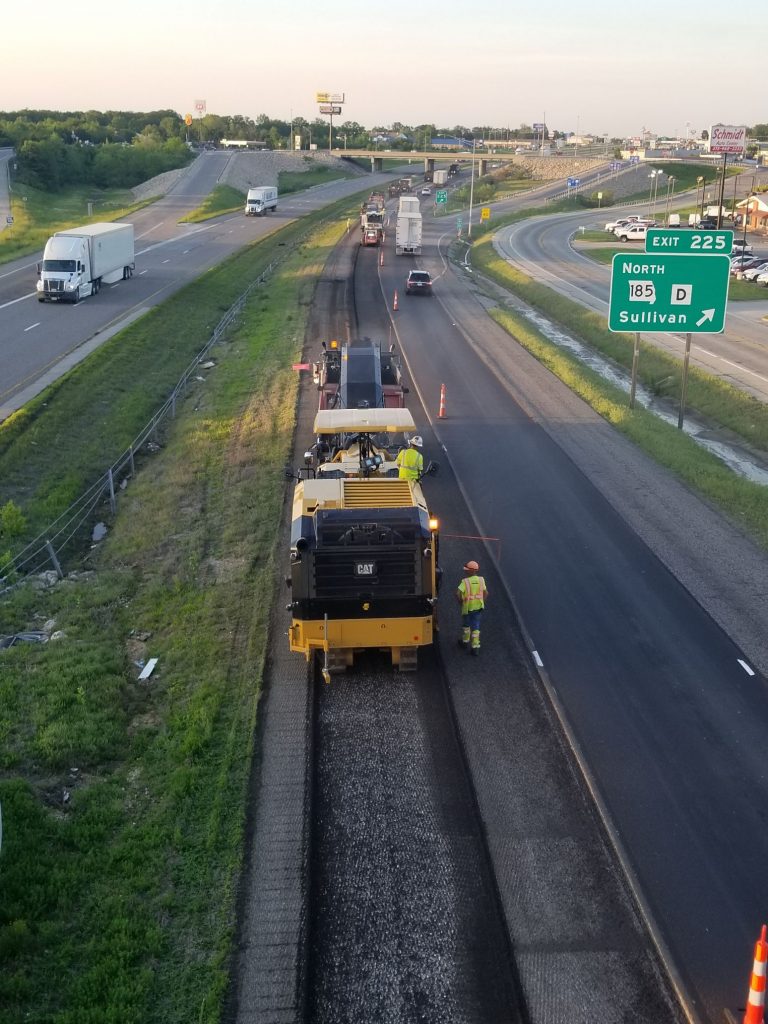
Dan McKenzie served as the ground man next to the Cat mill. The team performed the complete mill and fill of each 7.5-mile section before moving on to the next to offer a safer experience for the traveling public and to ensure a smoother end result.
Zimpfer explained the system they used for the I-44 project included a MOBA camera mounted on a new Cat paver for thermal profiling and Volvo rollers with intelligent compaction systems. “It was one of 13 jobs in the state mandated for IC/IR [intelligent compaction/infrared],” he shared. “We used the thermal camera to check the consistency of our mat. Our crews and plant personnel did a great job maintaining temperature of the mix.”
At the plant, a tarp sealing the batch tower helped keep temperatures consistent.
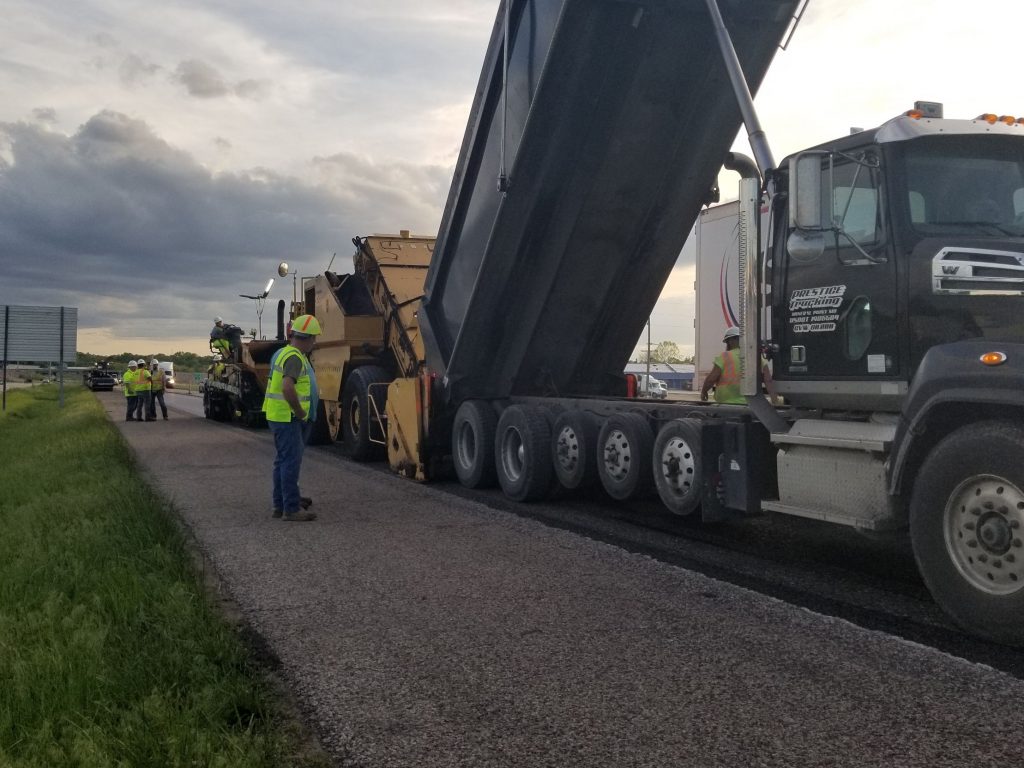
The crew placed 49,260 tons of 12.5-mm SMA in a 1.75-inch lift of surface atop 62,912 tons of 19-mm SP190C base at 2.25 inches. They also placed 22,906 tons of 12.5-mm shoulder mix at a depth of 1.75 inches.
“The camera shows a thermal image of temperatures across the mat. If we were seeing inconsistencies, we would start looking at each component of the paving side and plant side to find what was causing the inconsistency.”
MoDOT had a system for reviewing the data and paying based on the numbers. According to Oesch, “MoDOT’s specification requires a quality control program of the contractor. Since the contractor receives either incentive or disincentive based on the results from both PMTPS and IC, it really encourages them to monitor the results and make changes to maximize performance.”
“All of our data was shared with MoDOT via sharepoint,” Zimpfer said. “MoDOT reviewed the data and issued bonuses or deducts based on performance.”
“N.B. West did an excellent job with both the PMTPS and the IC components receiving an incentive payment for the project,” Oesch shared.
Zimpfer explained that they received full bonuses on nearly every section of IC/IR data. While that might make the job sound easy, the crew had some challenges to overcome. The first was the weather.
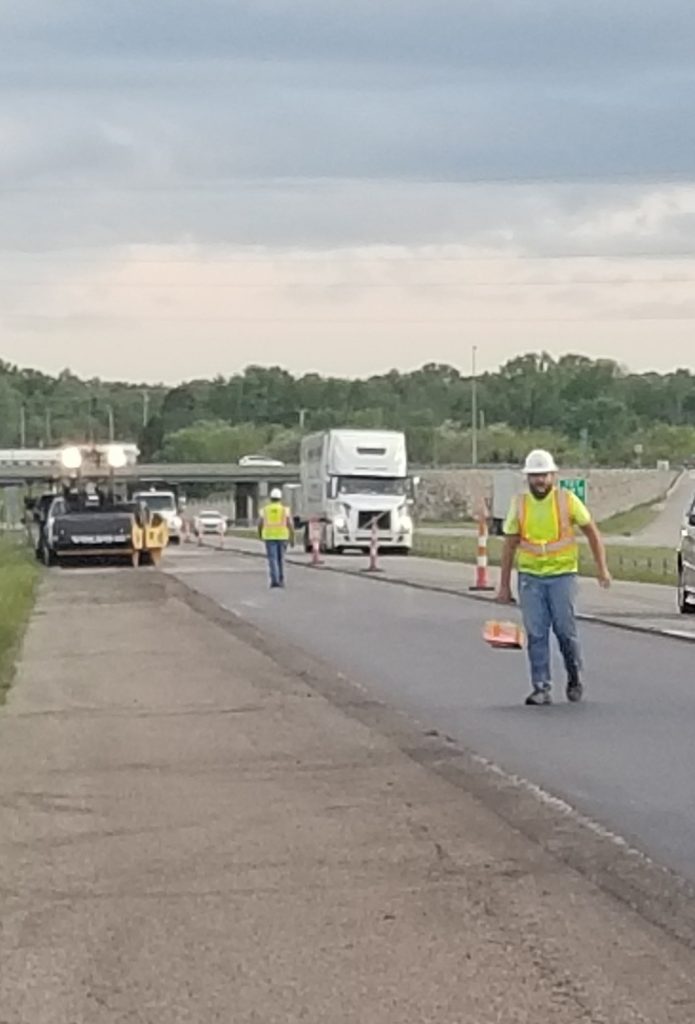
Project Manager Justin Zimpfer checks on quality readings behind the breakdown roller on I-44.
“The spring of 2019 was one of the wettest springs that all contractors experienced in a long time,” West said. “The plant site had nearly 50 inches of rain from early April to late July. We ran a 45 percent RAP SP190B and had to continuously monitor the moisture in our RAP piles to be able to run. We actually moved some shingles out of our shingle bin to keep RAP dry when we could, or process material that day or night to let other piles dry out.”
For this project, N.B. West used its new Astec portable plant, installed at the end of 2018, to make the SP125BSM and about half of the SP190B.
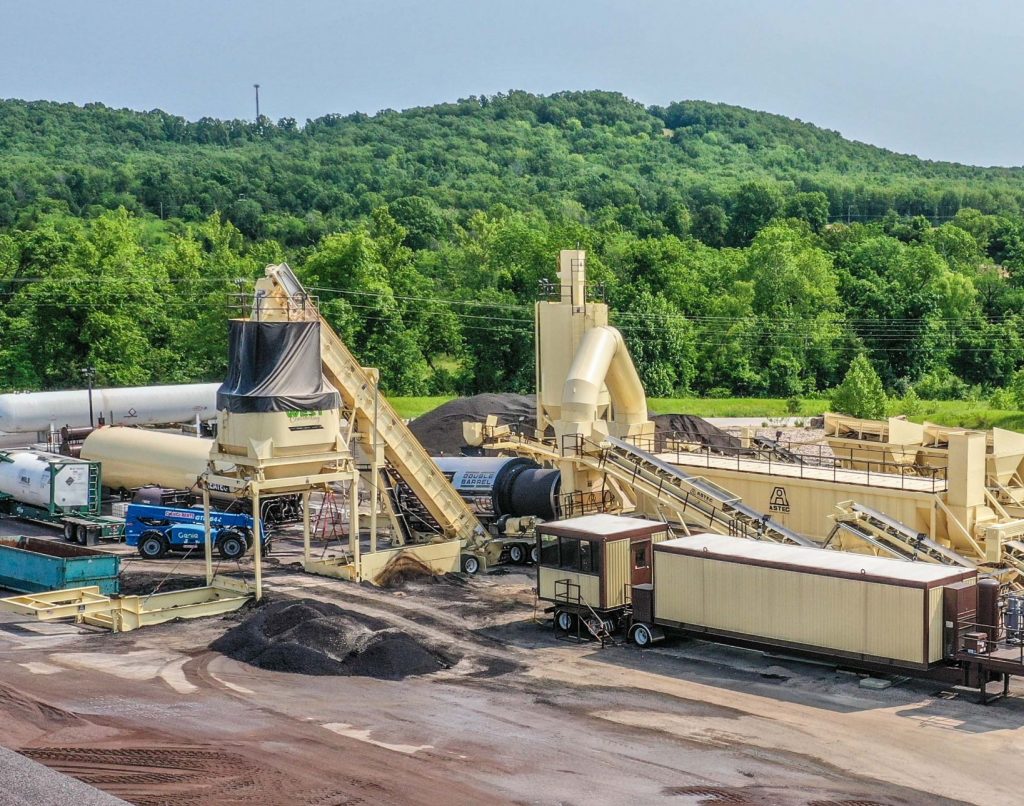
The tarp on the batch tower helps keep mix temperatures consistent at the point of production.
The team also managed the logistics to keep weather from posing a hazard to the traveling public. Jackson explained the job totaled 15 miles long, but rather than mill everything, then place the base, then place the top, they elected to divide the job into quarters. They would mill and fill 7.5 miles, then move forward to mill and fill the next 7.5 miles. Zimpfer shared: “We decided to completely top out each section to prevent ponding of water, which would create driving hazards to the public.”
Another challenge the crew discovered and solved involved a hole encroaching on the roadway.
“In early April 2019, a sink hole was discovered in the median shoulder that extended 3 feet to 4 feet into the passing lane of eastbound 44,” West reported. “The hole was approximately 8 feet in diameter by 16 feet deep. There were no active construction operations at or near the location of the sink hole when it was found.”
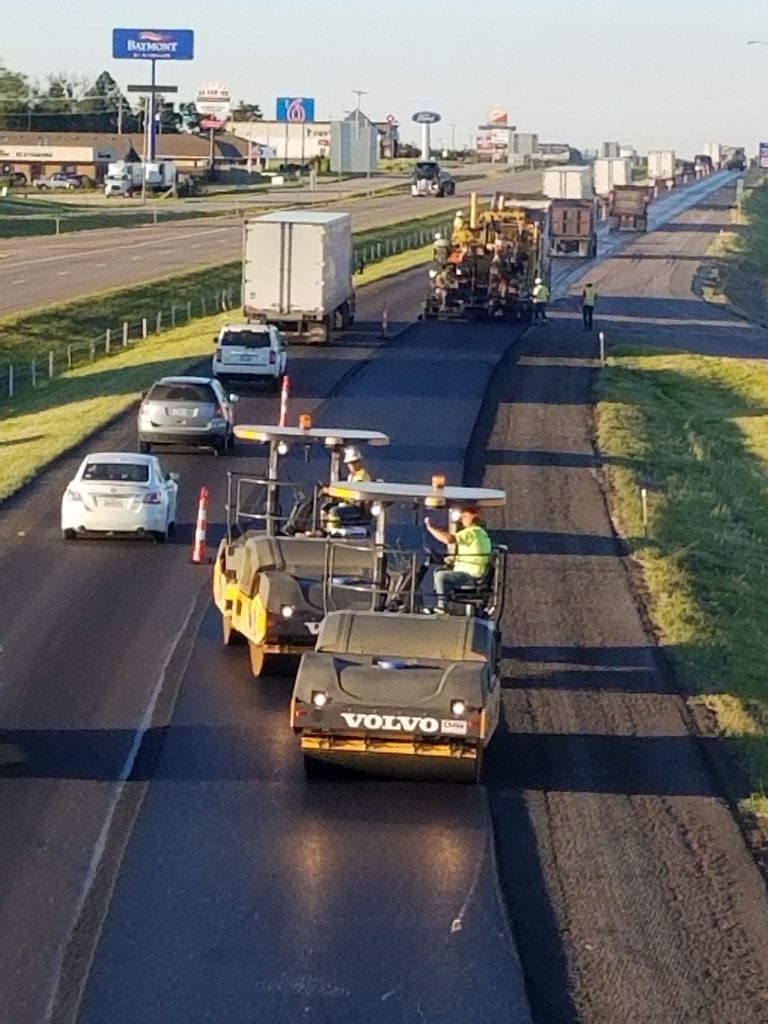
The team used Volvo rollers with intelligent compaction to achieve bonus-worthy compaction.
He shared that they found it in the shoulder area around 6:00 a.m. one day. “The passing lane was immediately shut down and the shoulder was excavated to provide access. The hole was filled with oversize rock and capped with concrete. Inspection pipes were installed in the shoulder area to monitor for settlement. The lane was reopened to traffic at 5:00 p.m. the same day. MoDOT performed a variety of tests at the sink hole site over the next two months.”
Despite challenges, Project Manager Zimpfer led his crew to success. “The paving team achieved a full 5 percent bonus on the profilograph,” West shared.
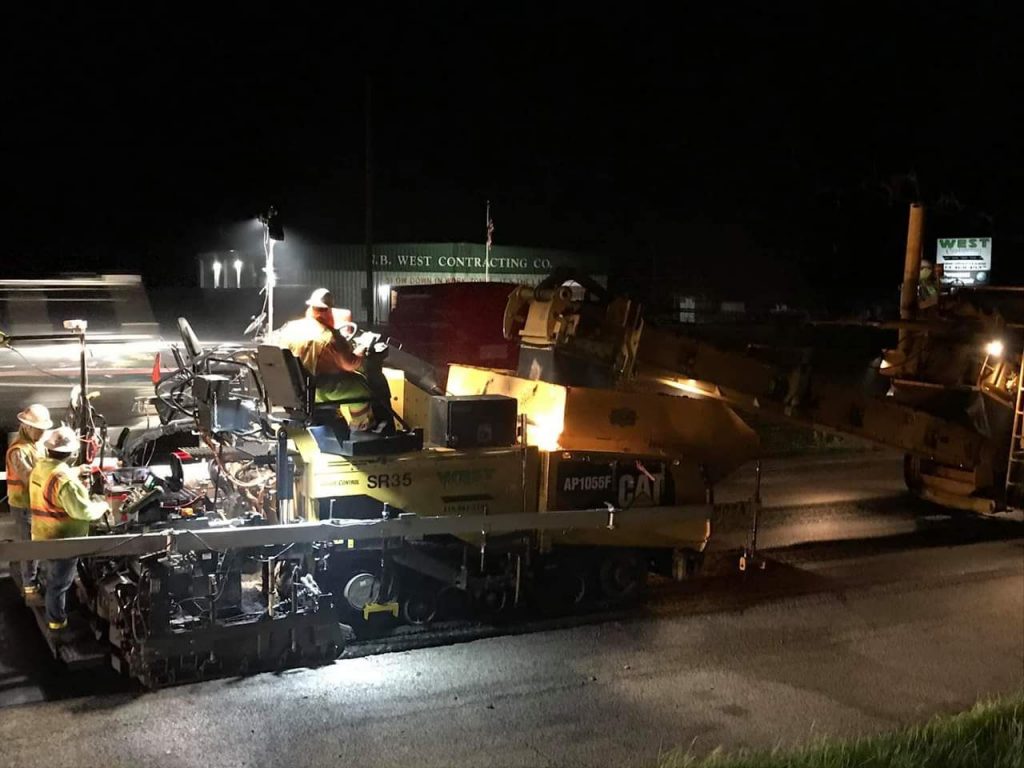
To achieve a NAPA QIC award, a project often requires more than the excellent quality N.B. West brought to I-44. For example, this job included a number of environmentally sustainable aspects. Not only did the SP190B mix include 45 percent RAP, the team used Evotherm and Evoflex additives in the RAP mix to reduce production temperatures, thus saving energy. Evotherm was also used in the SP125BSM.
“The overall project turned out beautifully and the ride quality is next to none despite the hurdles,” West said.
Check out the sidebar of information about paver-mounted thermal profiling scanning (PMTPS) that originally ran alongside this article.
